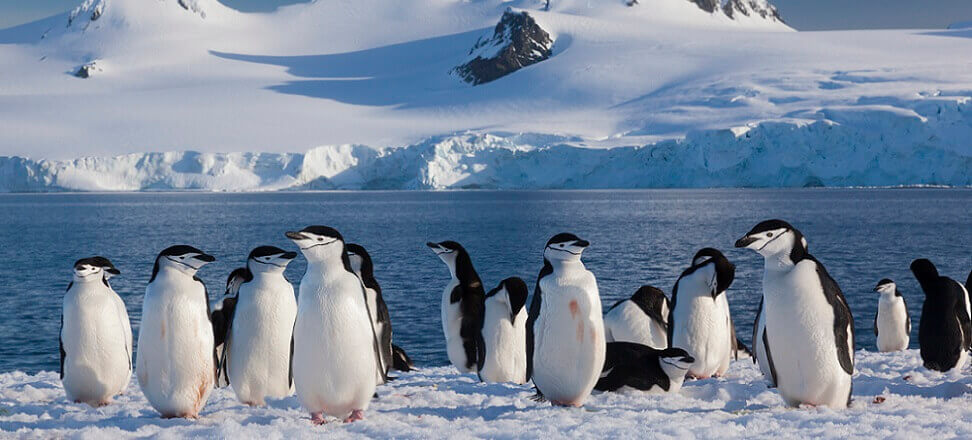Recent studies reveal that plastic particles have reached even the most remote ecosystems on Earth. First they appeared in freshly fallen snow, and now they have been confirmed in penguin-inhabited water. Microplastics are present even where there are no people to whom plastics seem indispensable. It’s high time to think about the impact of microplastics on our health and dynamically implement ways and technologies to reduce their formation.
What is microplastic?
As a reminder, microplastics are plastic fragments smaller than 5 mm in diameter, formed from the erosion of larger plastic fragments deposited in landfills and oceans. Nearly 3 million tons of microplastics enter the environment each year, posing a serious environmental threat.
Where does microplastic come from in the water inhabited by penguins?
A study conducted by the United Nations International Atomic Energy Agency(IAEA) in cooperation with the Argentine Antarctic Institute(IAA) has revealed the presence of microplastics in Antarctic water inhabited by penguins, as well as in their feces. The analysis conducted is part of the IAEA’s global NUTEC Plastics Initiative, which examines the level of microplastic pollution around the world.
Scientists – sailing aboard the Argentine icebreaker Almirante Irízar – collect samples, which are then delivered to Argentina’s Carlini base and the IAEA research center in Monaco. When analyzing the samples, which included Antarctic waters, seafloor sediments and penguin droppings, the research team uses nuclear and isotopic testing techniques. Their findings are expected to provide key information on the extent and impact of microplastic contamination in this environment. Rafael Grossi, Director General of the IAEA, stressed the effectiveness of the research in determining the amount and origin of contamination. IAA’s Lucas Ruberto, meanwhile, noted the importance of identifying the smallest microplastics and tracking their origin. The study is expected to determine whether these particles are carried to Antarctica by ocean currents or are formed locally.
Earlier findings, published in 2021. in the Proceedings of the National Academy of Sciences, showed that microplastics spread globally, carried by wind and ocean currents. Scientists have also found microplastic near the summit of Mount Everest, underscoring its ubiquity.
Microplastics in water – importance for the global ecosystem
Plastic pollution has both local and global effects. Laura Revell, an associate professor at the University of Canterbury, points out that microplastics can contain toxic substances such as heavy metals and algae, contributing to their transmission to remote and sensitive sites. Scientists are sounding the alarm that people are inhaling and ingesting microplastics along with water, air and food. It is estimated that the average person consumes and inhales between 74,000 and 114,000. Microplastic particles per year. Research on its effects on human health is still in its infancy, but there is concern that high levels of consumption may harm.
As it turns out, microplastic particles created by the widespread use of plastics also pose a serious threat to marine life. They accumulate in organisms living in this environment, leading to various diseases. Microplastics also add to the problem of global warming, as deposits on ice caps, glaciers and snowfields accelerate melting, absorbing sunlight and increasing local temperatures. Currently, the research team is focusing on understanding the situation and investigating ways to clean the environment of microbeads and prevent future pollution of this kind. This is important for protecting the Antarctic ecosystem and its inhabitants, including penguins.
Microplastics in the snow
Interestingly, another study, which was published in the journal The Cryosphere in 2022. has revealed that microplastics found in fresh Antarctic snow may be contributing to accelerating climate change by increasing the rate of ice melt.
In 2019. Researchers from the University of Canterbury in New Zealand collected snow samples from 19 different locations in Antarctica, including the Ross Shelf Glacier. Dr. Alex Aves and his team found that all the samples contained tiny pieces of plastic, with an average of 29 particles per liter of melted snow. Thirteen different types of plastics were identified, with polyethylene terephthalate (PET) as the most common, accounting for 79 percent. samples. PET is commonly used to make clothing and beverage bottles. The study suggested that the airborne microplastics may have come from local research stations, but modeling rather indicates that they may have moved from distances of up to 6,000. km.
As Lucas Ruberto of the IAA notes, the scale of the problem is huge – since people started using plastic, some 7 billion tons of plastic have been discarded, with much of it ending up in the marine environment. This implies an urgent need to address the problem. Understanding the causes of the current situation and developing ways to clean up and prevent future microplastic pollution is becoming a key issue that can ensure the protection of the fragile Antarctic ecosystem.

 Polski
Polski






